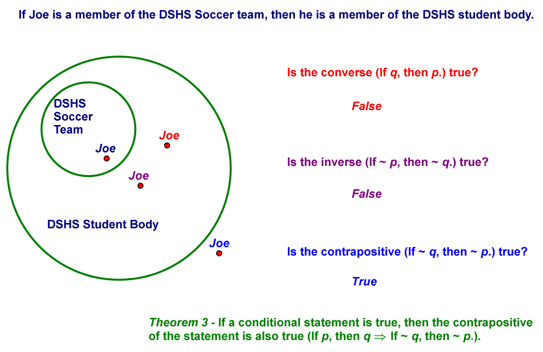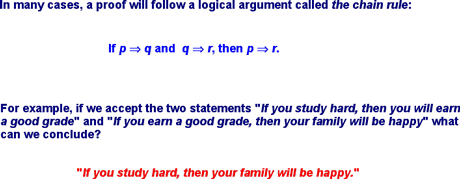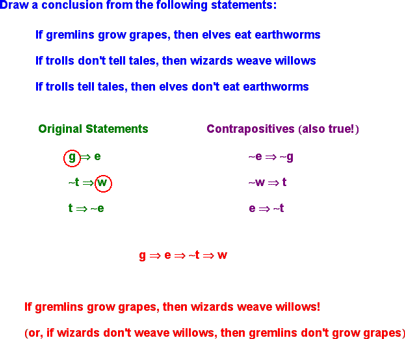 |
| you are here > Class Notes - Chapter 1 - Lesson 1-8 | |||||||||||||||||||||||||||||||||||
|
Statements of Logic - Lesson 1-8 Today, we discussed conditional statements (those of the form if...then...). First, we decomposed them into their component parts, then we talked about the negation of a conditional statement.
Next, we talked about the converse, inverse, and contrapositive of conditional statements.
We then talked about Venn Diagrams and how they could help us to evaluate the various forms of conditional statements...can you answer the questions below?
We ended by talking about the Chain Rule and how it can be applied to conditional statements:
Remember the hint I gave you for solving chain rule type problems: you made need to use the contrapositive of some of the given statements in order to solve the chain! Here's an example we did in class:
|
|
||||||||||||||||||||||||||||||||||




